Exhibition dates: 6th February – 20th May 2018
Curators: Carles Guerra and Pia Viewing
Susan Meiselas (American, b. 1948)
Sandinistes aux portes du quartier général de la Garde nationale à Esteli : “L’homme au cocktail Molotov”, Nicaragua
16 juillet 1979
© Susan Meiselas/ Magnum Photos
NICARAGUA. Esteli. 1979. Sandinistas at the walls of the Esteli National Guard headquarters
The second of a double header from Jeu de Paume, Paris.
Whatever you write or say doesn’t matter. It’s the images that matter, the work before you.
Meiselas’ work offers respect, that is the key word, respect for the individuality of the people she photographs. You can feel it in her images; it is what gives them their power. Unlike the previous posting on the work of Raoul Hausmann, where it was all about the photographer, here the work is authored but the photographs are all about the subject: their place in the world, their trials and tribulations.
Meiselas’ photographs are very strong – graphic work (in form and declaration) balanced with an existential, human touch. Meiselas questions the nature of the original photograph and photographic process in order to understand how the photograph and its ongoing testimonies change in specific times and places, by developing multilayered narratives which integrate the participation of her subjects into her works. As such they are as much meditations on the human condition as much as mediations between place, her role as witness, storytelling, and how the meaning of images changes according to the context of their diffusion, which is facilitated by technology.
On the compilation of her visual histories, I can’t put it better than the text below:
“Lauded documentary photographer Susan Meiselas has been working at the nexus of history, politics, ethnography, art, and storytelling throughout her prolific career, producing multi-layered photographic narratives about individuals and societies across the U.S. and the world. Sensitive to both the potential and limitations of images, the 1992 MacArthur Fellow approaches her projects aware of their inevitable impartiality and incompleteness, supplementing her own photographs with texts, interviews, archival images, and other forms of documentation. “My projects are authored but I’d like to think they are not authoritative,” she says.”1
Dr Marcus Bunyan
1/ Anonymous text. “About Susan Meiselas” on the Artsy website Nd [Online] Cited 14/02/2022
Many thankx to Jeu de Paume for allowing me to publish the photographs in the posting. Please click on the photographs for a larger version of the image.
A member of Magnum Photos since 1976, Susan Meiselas questions documentary practice. She became known through her work in conflict zones of Central America in the 1970s and 1980s in particular due to the strength of her colour photographs. Covering many subjects and countries, from war to human rights issues and from cultural identity to the sex industry, Meiselas uses photography, film, video and sometimes archive material, as she relentlessly explores and develops narratives integrating the participation of her subjects in her works. The exhibition highlights Susan Meiselas’ unique personal as well as geopolitical approach, showing how she moves through time and conflict and how she constantly questions the photographic process and her role as witness.
“It is important to me – in fact, it is central to my work – that I do what I can to respect the individuality of the people I photograph, all of whom exist in specific times and places.”
“This photograph is for whom. And so, for a long time that’s been the question motivating almost everything that I do.”
Susan Meiselas
Susan Meiselas: Mediations at Jeu de Paume on Vimeo
Susan Meiselas (American, b. 1948)
Sharif and Son
1971
From the series 44 Irving Street, 1971
© Susan Meiselas/Magnum Photos
Susan Meiselas (American, b. 1948)
Lena juchée sur sa caisse, Essex Junction, Vermont, 1973
Lena on the Bally Box, Essex Junction, Vermont, 1973
1973
From the series Carnival Strippers, 1972-1975
© Susan Meiselas/Magnum Photos
USA. Essex Junction, Vermont. 1973. Lena on the Bally Box
Susan Meiselas (American, b. 1948)
Lena après le spectacle, Essex Junction, Vermont, 1973
Lena after the show, Essex Junction, Vermont, 1973
1973
From the series Carnival Strippers, 1972-1975
© Susan Meiselas/ Magnum Photos
USA. Essex Junction, Vermont. 1973. Lena after the show
“Meiselas is known for her searing, visceral photographs of civil unrest and political revolution around the world, from Central America to Kurdistan. However, it is her “Carnival Strippers” that defines her career for many.”
Artsy Editors. “A History of Magnum Photos in Ten Photographers” on the Artsy website Jan 21, 2014 [Online] Cited 13/02/2022
See what they mean on the Susan Meiselas: “Carnival Strippers” 1972-1975 web page.
Susan Meiselas (American, b. 1948)
Debbie et Renee, Rockland, Maine, 1972
1972
From the series Carnival Strippers, 1972-1975
© Susan Meiselas/Magnum Photos
USA. Rockland, Maine. 1972. Debbie and Renee
Meiselas’s first major photographic essay focused on the lives of women performing striptease at New England country fairs, whom she photographed during three consecutive summers while teaching photography in New York City public school classrooms. Carnival Strippers was originally published in 1976 with a new edition of the book (which included a CD of the audio recordings) produced by Steidl / Whitney in 2003. In 1976, Meiselas was invited to join the photographic cooperative Magnum Photos. Beginning in 1976, she photographed a group of young girls living in her neighbourhood of Little Italy, New York. Entitled Prince Street Girls, they inspired an on-going relationship.
Meiselas is best known for her coverage of the insurrection in Nicaragua and her documentation of human rights issues in Latin America for over a decade. In 1978 Meiselas made her first trip to Nicaragua, and that year one of her iconic images was published on the cover of the New York Times Magazine. In 1981, she published Nicaragua: June 1978-July 1979, reprinted in 2008 (with a DVD of the film “Pictures from a Revolution”) and in 2016 (with a customise AR app, to trigger film clips from the photographs). Her image of Pablo Jesús Aráuz, the ‘Molotov Man’, made on July 16, 1979 just before the triumph of the Sandinistas, has become an icon of the revolution. The image is shown recontextualised in the installation The Life of an Image: ‘Molotov Man’, 1979-2009. Meiselas served as an editor for two collaborative projects, both of which support and highlight the work of regional photographers. The first, El Salvador: The Work of Thirty Photographers, Writers and Readers, 1983, also features her own images. The second project, Chile from Within, W. W. Norton, 1991, focuses on work by photographers living under the Pinochet regime. Meiselas has also co-directed four films: Living at Risk: The Story of a Nicaraguan Family, 1986 ; Voyages, on her work in Nicaragua produced in collaboration with director M. Karlin, Pictures from a Revolution, 1991, with R. P. Rogers and A. Guzzetti; and Reframing History, 2004.
In 1992, Meiselas produced Kurdistan: In the Shadow of History, Random House, 1997; University of Chicago Press, 2008. The book was produced along with akaKURDISTAN, 1998, an online archive of collective memory, currently shown as a physical map with story books made by contributors from the Kurdish diaspora worldwide. Pandora’s Box, Trebruk/Magnum Editions, 2003, is an exploration of an underground New York S&M club that began in 1995. Both projects are shown as exhibition works.
Susan Meiselas (American, b. 1948)
Mississippi
1974
From the series Porch Portraits, 1974
© Susan Meiselas/Magnum Photos
Susan Meiselas (American, b. 1948)
Caroline du Sud
1974
From the series Porch Portraits, 1974
© Susan Meiselas/Magnum Photos
Susan Meiselas (American, b. 1948)
Dee et Lisa, Mott Street, Little Italy, New York, 1976
1976
From the series Prince Street Girls, 1975-1990
© Susan Meiselas/ Magnum Photos
Susan Meiselas (American, b. 1948)
Roseann sur la route pour Manhatten Beach, New York, 1978
1978
From the series Prince Street Girls, 1975-1990
© Susan Meiselas/Magnum Photos
USA. New York CIty. 1978. Roseann on the way to Manhattan Beach
Alain Dejean / Sygma
Portrait de Susan Meiselas, Monimbo, Nicaragua
Septembre 1978
© Alain Dejean Sygma
The retrospective devoted to the American photographer Susan Meiselas (b. 1948, Baltimore) brings together a selection of works from the 1970s to the present day. A member of Magnum Photos since 1976, Susan Meiselas questions documentary practice. She became known through her work in conflict zones of Central America in the 1970s and 1980s in particular due to the strength of her colour photographs. Covering many subjects and countries, from war to human rights issues and from cultural identity to the sex industry, Meiselas uses photography, film, video and sometimes archive material, as she relentlessly explores and develops narratives integrating the participation of her subjects in her works. The exhibition highlights Susan Meiselas’s unique personal as well as geopolitical approach, showing how she moves through time and conflict and how she constantly questions the photographic process and her role as witness.
Her early works already illustrate her interest for documentary photography. Her very first project, 44 Irving Street (1971), was a series of black and white portraits. Here, she used her camera as a means of interacting with the other tenants of the boarding house where she lived during her time as a student. For Carnival Strippers (1972-1975), Meiselas followed strippers working in carnivals in New England over the course of three consecutive summers. The reportage is completed with audio recordings of the women, their clients and managers.
From this period originates also Prince Street Girls (1975-1992), which was shot in the district known as Little Italy, in New York, where Susan Meiselas still lives. She photographed a group of young girls over several years, capturing the changes that took place in their lives as they were growing up, constituting a chronicle of the evolving relationship between the young girls and the photographer.
Three important series represent the center of the exhibition: Nicaragua, El Salvador and Kurdistan. Made between the late 1970s and 2000, the works reveal the way in which the artist challenges and practises photography. During the course of her extensive travels in Latin America, over a number of decades, in times of war and peace, Meiselas returns to the sites where she took the original photographs, using the images to find the people she had met in order to pursue a record of their testimonies. With her project Mediations (1982), Susan Meiselas reveals how the meaning of images changes according to the context of their diffusion. Her novel approach is almost prophetic in a world where the diffusion of the image is facilitated by technology.
As from 1997, Meiselas addresses each conflict in a different way according to the context. Kurdistan: In the Shadow of History (1997) is an archive of the visual history of a people without a nation. Meiselas, who gathered those elements all around the world in collaboration with Kurdish people, constructed her work as an installation composed of a compilation of documents, photographs and videos.
In 1992, Meiselas, asked to contribute to an awareness campaign exposing domestic violence, began by photographing crime scenes, accompanying a team of police investigators, and then selected a number of documents with photographs from the archives of the San Francisco Police Department. This research led her to create Archives of Abuse, collages of police reports and photographs, exhibited in the city’s public spaces as posters on bus shelters.
For the retrospective at the Jeu de Paume, Susan Meiselas has created a new work, begun in 2015, based on her involvement with Multistory, a regional arts organisation based in the United Kingdom. This last series A Room of Their Own was made collaboratively in a refuge for women and focuses on domestic violence. The installation includes five narrative video works, featuring Meiselas’s photographs, first-hand testimonies, collages and drawings.
The exhibition of the Jeu de Paume is the most comprehensive retrospective of her work ever held in France. It retraces her trajectory since the 1970s as a visual artist who associates her subjects to her approach and questions the status of images in relation to the context in which they are perceived.
Press release from Jeu de Paume
Susan Meiselas (American, b. 1948)
Masque traditionnel utilisé lors de l’insurrection populaire, Masaya, Nicaragua
(Traditional mask used during the popular uprising, Masaya, Nicaragua)
1978
© Susan Meiselas/Magnum Photos
In the late 1970s, without an assignment of any sort, Susan Meiselas went to Nicaragua to cover the popular insurrection following the assassination of the editor of the opposition newspaper La Prensa. She became one of the most celebrated photojournalists in the world for her colour photographs of the Sandinista Popular Revolution. Some of them became icons of the Nicaraguan revolution. She didn’t see the insurrection as a series of isolated news events as a photojournalist would, but rather a historical process that was unfolding every day. Her approach was specific to the context of the conflict and the terrain.
Susan Meiselas (American, b. 1948)
Fouille de toutes les personnes voyageant en voiture, en camion, en bus ou à pied, Ciudad Sandino, Nicaragua
1978
© Susan Meiselas/Magnum Photos
NICARAGUA. Cuidad Sandino. Searching everyone traveling by car, truck, bus or foot
Susan Meiselas (American, b. 1948)
Retour chez soi, Masaya, Nicaragua
1978
© Susan Meiselas/Magnum Photos
NICARAGUA. Masaya. September, 1978. Returning home
Susan Meiselas (American, b. 1948)
Muchachos attendant la riposte de la Garde nationale, Matagalpa, Nicaragua
1978
© Susan Meiselas/ Magnum Photos
NICARAGUA. Matagalpa. Muchachos await the counterattack by the National Guard
Susan Meiselas (American, b. 1948)
Soldats fouillant la passagers du bus sur l’autoroute Nord, El Salvador
1980
© Susan Meiselas/ Magnum Photos
EL SALVADOR. 1980. Soldiers search bus passengers along the Northern Highway
Susan Meiselas (American, b. 1948)
Route pour Aguilares, El Salvador
1983
© Susan Meiselas/Magnum Photos
EL SALVADOR. 1983. Road to Aguilares.
With Mediations, 1982, the project that lends its title to this retrospective exhibition, Meiselas revealed the effects that the circulation of images produces on their meaning. At a time when, thanks to new technologies, photography has become the object of an all-reaching exchange, Meiselas’s attitude becomes unprecedented, while her archival projects constitute a valuable precedent. Two of them, the ones devoted to Nicaragua and Kurdistan, are widely represented in this exhibition.
Susan Meiselas (American, b. 1948)
Veuve sur le charnier de Koreme, nord de l’Irak
(Widow at the mass grave of Koreme, northern Iraq)
1992
© Susan Meiselas/Magnum Photos
NORTHERN IRAQ. Kurdistan. June, 1992. Widow at mass grave found in Koreme
The retrospective emphasises the development of Susan Meiselas’ photographic practice from the 1970s onwards. In most of her early work, she addresses the subjects of her portrait-based images by including them in one way or another in the process of her work. In 44 Irving Street, (1972), she asks the persons portrayed to comment on their representation and in Carnival Strippers (1975), a sound recording of the context in which the photographs are taken gives further perspective on the strippers lives. In addition to this aspect, her interest in archival documentation and the compilation of visual histories can also be traced back to this period (Lando, 1975) and one can see this develop in her research work on Kurdistan. Her treatment of images reveals that, in her artistic practice, she considers the photographic frame as a moment in time complementary to other forms of framing and capturing reality, which may be seen and reviewed over time.
Susan Meiselas (b. 1948, Baltimore)
Blocs de béton signalant la fosse commune de Koreme, nord de l’Irak
(Concrete blocks signaling Koreme Mass grave, northern Iraq)
1992
© Susan Meiselas/ Magnum Photos
Jeu de Paume
1, Place de la Concorde
75008 Paris
métro Concorde
Phone: 01 47 03 12 50
Opening hours:
Tuesday: 11.00 – 21.00
Wednesday – Sunday: 11.00 – 19.00
Closed Monday




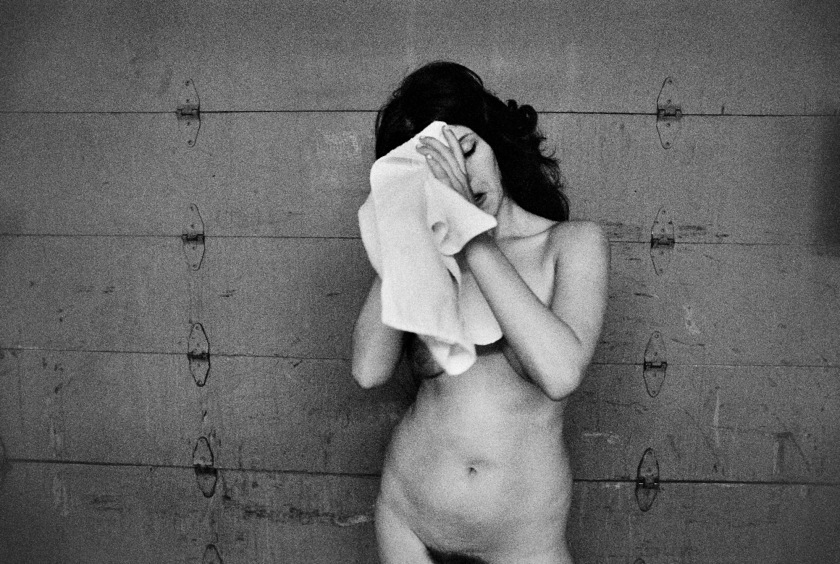


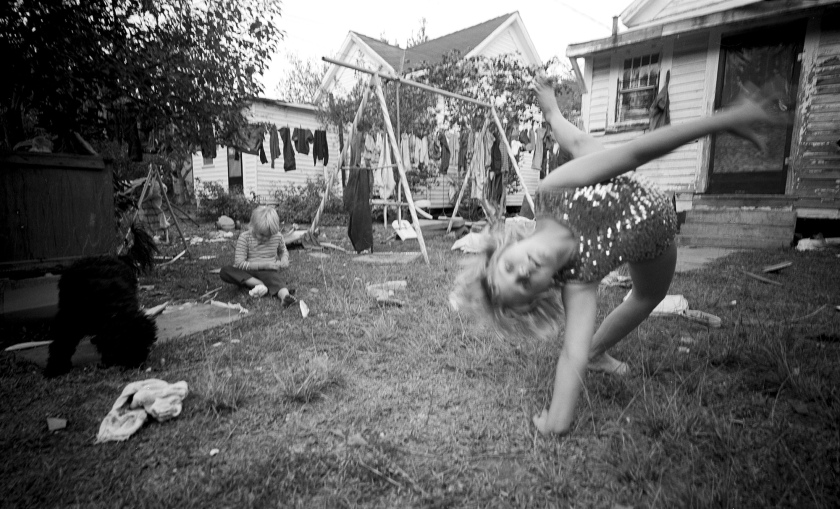

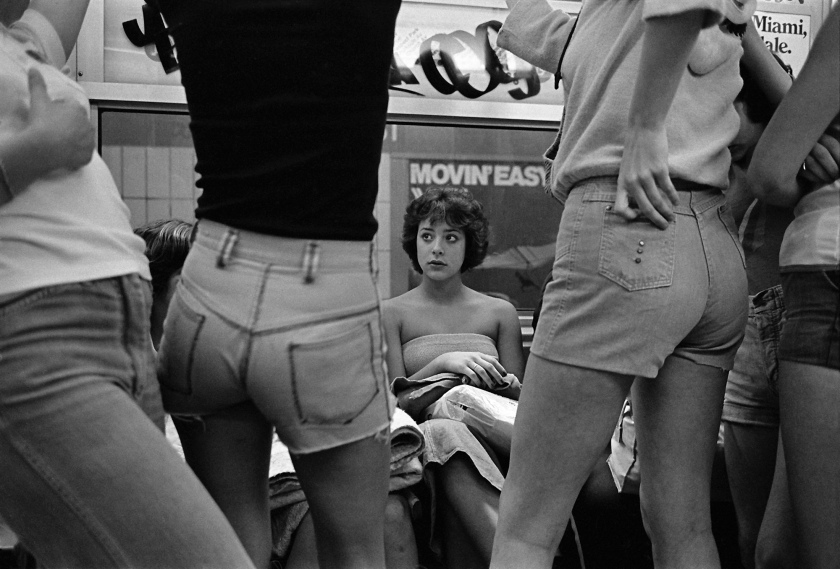





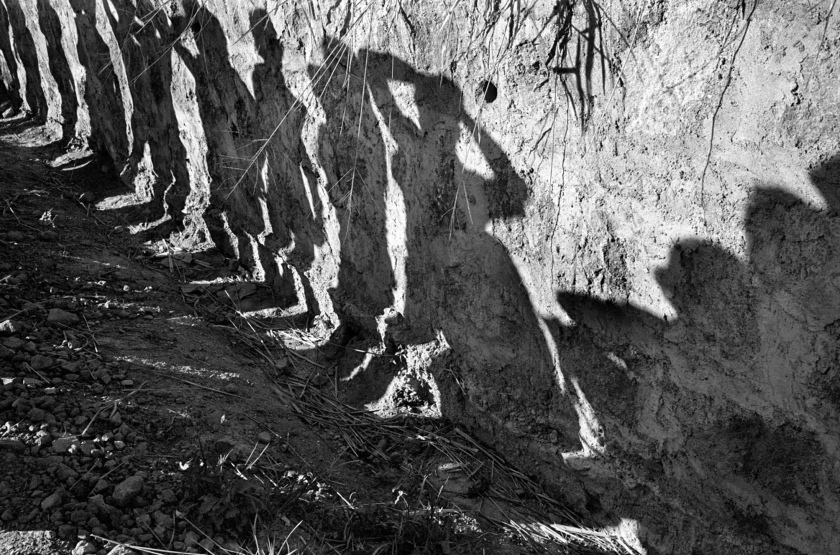

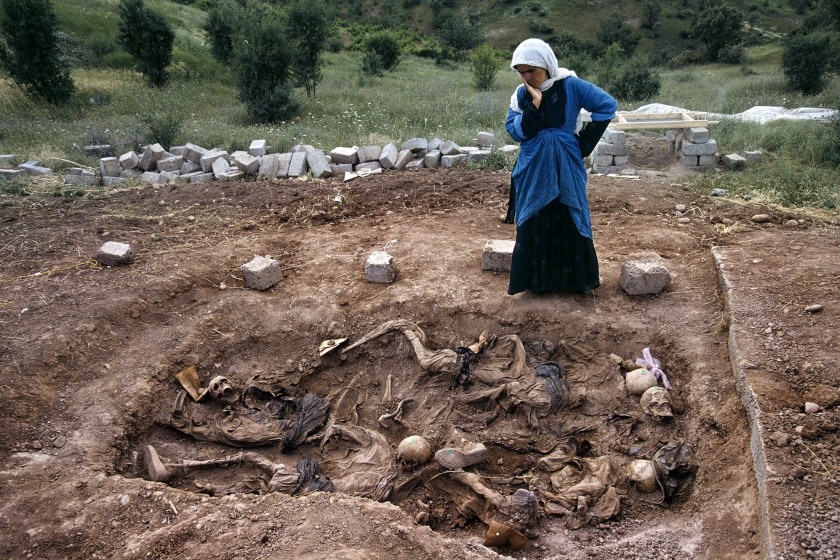

You must be logged in to post a comment.